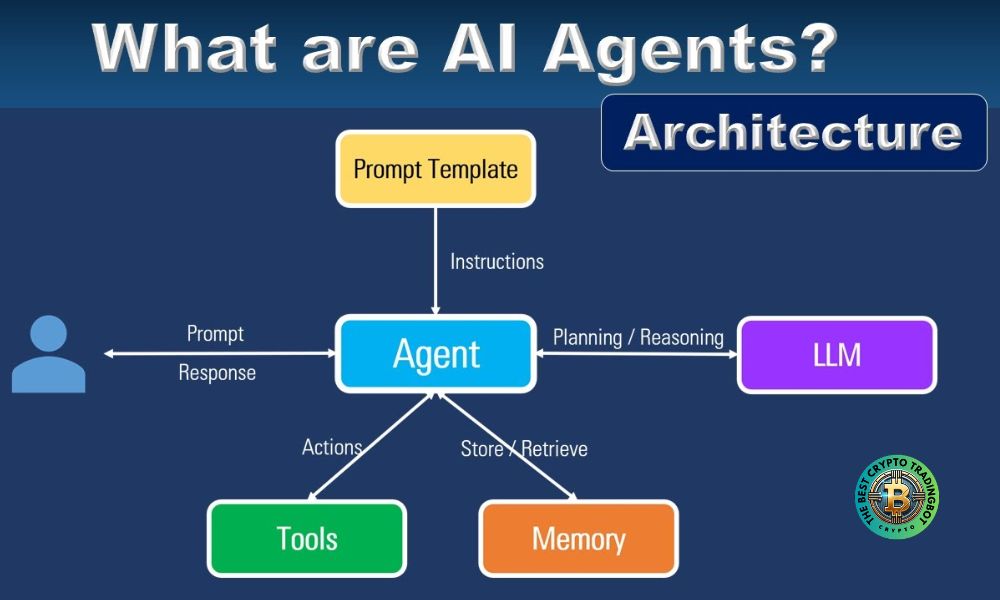An AI agent architecture diagram provides the blueprint for a modern intelligent agent, outlining how it orchestrates core components like an LLM, tools, and memory. This structure enables an agent to reason, act, and maintain context, moving far beyond simple rules. Understanding this diagram is key to grasping how today’s advanced virtual assistants truly function.
Contents
Introduction to modern AI agent architecture
In the current wave of artificial intelligence, the concept of an AI agent has taken a significant leap forward. Instead of rigid if-then rules, modern agents are built around large language models (LLMs), creating a much more flexible and powerful system. To fully grasp this mechanism, we need to analyze the AI agent architecture diagram being widely adopted today.
This blueprint is not just theoretical; it’s the practical design for applications like virtual assistants, process automation agents, and complex chatbots.
It describes an intelligent loop: receiving a user request, planning, using external tools, remembering information, and finally, delivering a relevant response. A clear understanding of this AI agent architecture diagram is essential for anyone working with advanced AI.
Detailed analysis of components in the AI agent architecture diagram

Based on the popular diagram, a modern AI agent consists of several key components that work in harmony. The AI agent architecture diagram shows how these pieces are interconnected.
Agent
This is the “conductor” of the entire orchestra. The agent’s primary role is not to do all the heavy lifting itself, but to coordinate and make decisions.
- Receives input: The agent takes a prompt from the user and instructions from a pre-defined prompt template.
- Orchestrates: Based on the request, the agent decides whether it needs the “brain” (LLM) for reasoning, the “arms” (tools) to act, or the “memory” to retrieve information.
- Returns output: After the other components have completed their tasks, the agent synthesizes the results and formulates the final response for the user.
LLM
This is the component that provides the “intelligence” for the agent. An LLM, such as OpenAI’s GPT models or Google’s Gemini, has superior capabilities for reasoning, logic, and planning.
- Role: When the agent receives a complex request, it delegates the “Planning / Reasoning” task to the LLM.
- Example: If a user asks, “Find flights from New York to London for tomorrow and compare the prices,” the agent will ask the LLM to break this task down into steps: (1) Search for flights on airline A, (2) Search for flights on airline B, (3) Compare the prices, (4) Present the results.
The LLM serves as the strategic brain of the entire AI agent architecture diagram.
Tools
Large language models have a significant limitation: they cannot interact with the real world or access real-time information beyond their training data cutoff date. “Tools” exist to solve this problem.
Role: Tools are functions or APIs that allow the agent to perform specific actions.
Examples:
- Web search API: To find real-time information on the internet.
- Calculator: To perform precise mathematical calculations.
- Code interpreter: To run snippets of code.
- Third-party APIs: To book flights, reserve hotels, or send emails.
When the agent decides a specific action is needed, it calls the corresponding tool. This is how the agent overcomes the inherent limitations of the LLM.
Memory
For a conversation to feel continuous and for an agent to learn from past interactions, it needs memory.
Role: Memory allows the agent to store and retrieve information.
Types:
- Short-term memory: Stores the history of the current conversation to maintain context.
- Long-term memory: Often implemented using vector databases, this allows the agent to store vast amounts of information and retrieve the most relevant knowledge for a given query.
Memory helps the agent become more personalized and effective over time, making it a critical part of the AI agent architecture diagram.
The complete operational loop
Let’s consider an example to see how this AI agent architecture diagram works in practice.
- User provides a Prompt: “What is the price of GOOG stock today, and email a report to my boss.”
- The Agent receives the Prompt and instructions from the Prompt Template.
- The Agent sends the request to the LLM for planning. The LLM returns the steps: (1) Find the stock price of GOOG, (2) Compose an email, (3) Send the email.
- To execute step 1, the Agent decides to use its Tools. It performs an Action by calling a financial API to get the stock price.
- The result is temporarily stored in Memory.
- To execute steps 2 and 3, the Agent again uses its Tools (an email API), combining the stock price information from Memory.
- After all actions are complete, the Agent generates the final Response: “The price of GOOG stock today is X. I have sent the report to your boss.”
In summary, the modern AI agent architecture diagram is a modular framework with the agent as the central coordinator and the LLM as the reasoning brain. This design enables the creation of intelligent, autonomous systems capable of complex interactions. For more useful insights into AI, be sure to follow The Best Crypto TradingBot.
